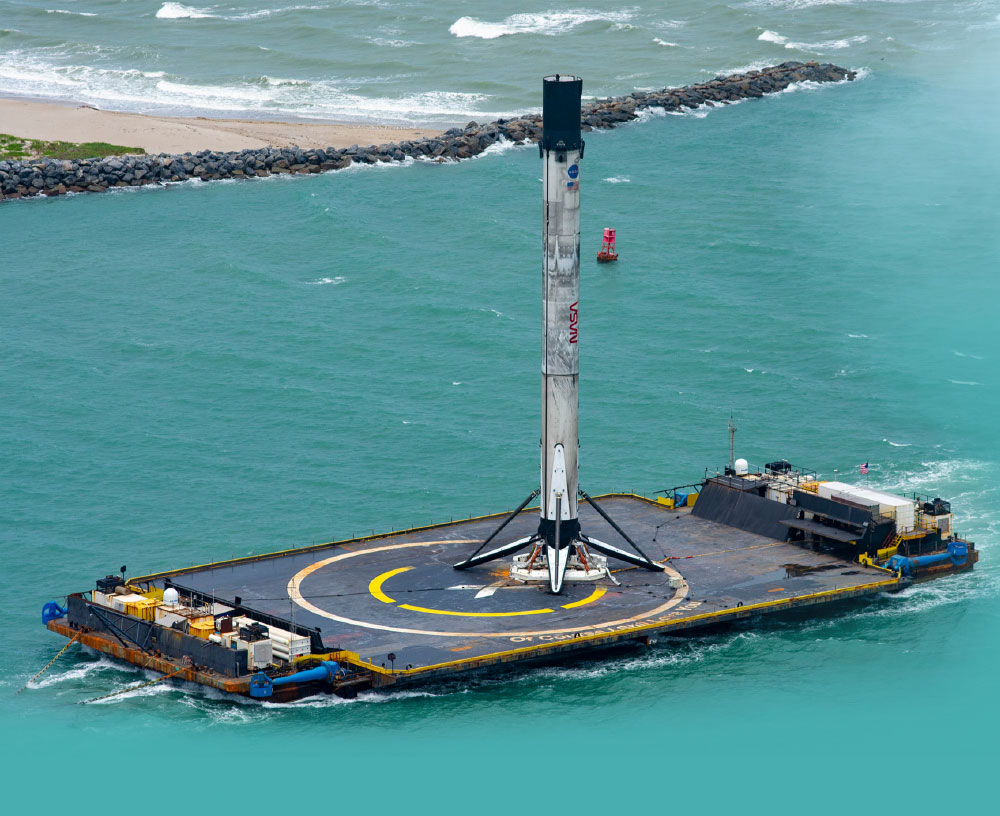


Falcon 9 is a two-stage rocket designed and manufactured by SpaceX for the reliable and safe transport of satellites and the Dragon spacecraft into orbit. Falcon 9 is the first orbital-class rocket capable of reflight.
Falcon 9 made history in 2012 when it delivered Dragon into the correct orbit for rendezvous with the International Space Station, making SpaceX the first commercial company to visit the station. Since then, Falcon 9 has made numerous trips to space, delivering satellites to orbit as well as delivering and returning cargo from the space station for NASA. Falcon 9, along with the Dragon spacecraft, was designed from the outset to deliver humans into space, and under an agreement with NASA, SpaceX is actively working toward this goal.
Falcon 9`s first stage incorporates nine Merlin engines and aluminum-lithium alloy tanks containing liquid oxygen and rocket-grade kerosene (RP-1) propellant. After ignition, a hold before-release system ensures that all engines are verified for full-thrust performance before the rocket is released for flight. Then, with thrust greater than five 747s at full power, the Merlin engines launch the rocket to space. Unlike airplanes, a rocket`s thrust actually increases with altitude; Falcon 9 generates more than 1.7 million pounds of thrust at sea level but produces over 1.8 million pounds of thrust in the vacuum of space. The first-stage engines are gradually throttled near the end of the first-stage flight to limit launch vehicle acceleration as the rocket`s mass decreases with the burning of fuel.
The interstage is a composite structure that connects the first and second stages and holds the release and separation system. Falcon 9 uses an all-pneumatic stage separation system (a highly reliable separation that can be tested on the ground) for low shock, unlike pyrotechnic systems used on most launch vehicles. Falcon 9 is equipped with an Autonomous Flight Termination System to be used in the unlikely event that the rocket drifts off course or becomes unresponsive. Carbon fiber landing legs and hypersonic grid fins, all stowed during ascent, are two of the critical elements essential to ensure safe and successful landing of the Falcon 9 first stage.
Technical Overview:
• Height: 70 meters or 229.6 feet
• Mass: 549,054 kilograms or 1,207,920 pounds
• Payload to Low Earth Orbit: 22,800 kilograms or 50,265 pounds
• Diameter: 3.7 meters or 12 feet